depression
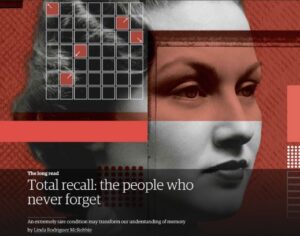
 Imagine being able to remember every day of your life, or maybe, not being able to forget any of it. Everyone is different, and the brain is quite mysterious. Some people have vague or no specific memories about their past, while others remember all the details of their lives. Some people can even give specific days, times, and weather conditions that were present at the time of a memory. Now, some people might call that a blessing, while others might see it as a curse. Either way, it is a bit of a novelty, to say the least. The condition is called Highly Superior Autobiographical Memory (HSAM), and as of 2017, fewer than 100 people were known to have the condition. The main characteristic of the condition is that the patient has a near-perfect memory for recalling dates and events. The scientific term for Superior Autobiographical Memory is Hyperthymesia. This form of memory is sometimes confused with Eidetic Memory, which is itself mistakenly associated with photographic memory. Superior Autobiographical Memory or Hyperthymesia is a confusing phenomenon, even for scientists.
Imagine being able to remember every day of your life, or maybe, not being able to forget any of it. Everyone is different, and the brain is quite mysterious. Some people have vague or no specific memories about their past, while others remember all the details of their lives. Some people can even give specific days, times, and weather conditions that were present at the time of a memory. Now, some people might call that a blessing, while others might see it as a curse. Either way, it is a bit of a novelty, to say the least. The condition is called Highly Superior Autobiographical Memory (HSAM), and as of 2017, fewer than 100 people were known to have the condition. The main characteristic of the condition is that the patient has a near-perfect memory for recalling dates and events. The scientific term for Superior Autobiographical Memory is Hyperthymesia. This form of memory is sometimes confused with Eidetic Memory, which is itself mistakenly associated with photographic memory. Superior Autobiographical Memory or Hyperthymesia is a confusing phenomenon, even for scientists.
The first person diagnosed with HSAM was Jill Price, who in 2000 emailed Dr James McGaugh, a professor in neurobiology and behavior at UC Irvine, about her memory problem. Strange that she called it a “memory problem” and not just an unusually good memory. Price wrote, “Whenever I see a date flash on the television…I automatically go back to that day and remember where I was, what I was doing, what day it fell on…” She described the experience as “nonstop, uncontrollable, and totally exhausting.” I think that part…especially the “totally exhausting” part, is something that most people wouldn’t even consider when it comes to memory, but then we have never been faced with a situation quite like that of Jill Price.
After receiving Price’s email, Dr McGaugh started researching the condition. Like most of us, it was something he had never given much thought to. His research took a long time, because information and case studies were pretty much non-existent, but in 2010, he appeared on 60 Minutes to discuss his findings. The 60 Minutes segment caused other people to reach out to him about their own version of the condition. Among the people who reached out to him was Joey DeGrandis, who had been aware of his near-perfect memory since he was 10. DeGrandis actually took a different approach to his situation than Price had. In fact, he treated his memory somewhat like a magic trick…even performing at a school magic show by accurately naming what day of the week any date in recent history fell on. He had previously considered his memory a novelty, he changed his opinion on it after hearing about other people with the condition and decided to take part in McGaugh’s studies.
The research into HSAM showed addition things that most of us wouldn’t thing about. One thing that the research showed was that many people with HSAM also suffer with obsessive traits. DeGrandis told Time he felt his HSAM contributed to his occasional bouts of depression and anxiety, as he struggles to let go of certain things. While many people think that HSAM is the same as having a photographic memory, that is actually not the case. Oddly, people with HSAM have no advanced memory when it comes to remembering things like names or faces. DeGrandis said in a 2017 interview with Time magazine, “I’m not great with names, or with mundane details like whether I brushed my teeth today or where I put my keys.”
I guess that we will never fully understand the human mind and memory, because while I can’t even begin to claim any link between HSAM and me, I find that I do quite well with names and faces, as well as remembering 
 computer procedures (once I’m shown one time), and a pretty good aptitude for medical procedure (at least as it applies to caregiving). I consider these things, at least a little bit like a photographic memory, since I can actually picture the computer screens in my head when I’m explaining steps to take with phones or computers to my family. The mind is an amazing thing, and I doubt if we will ever fully understand all it is capable of.
computer procedures (once I’m shown one time), and a pretty good aptitude for medical procedure (at least as it applies to caregiving). I consider these things, at least a little bit like a photographic memory, since I can actually picture the computer screens in my head when I’m explaining steps to take with phones or computers to my family. The mind is an amazing thing, and I doubt if we will ever fully understand all it is capable of.

 Drought…anywhere and at any time, is a perilous situation. Crops can’t grow, and food prices go up. But when a drought happens in the middle of an economic depression, it is catastrophic. The Dust Bowl, which was also known as the Dirty Thirties, was a period of severe dust storms during the 1930s. Mistakes were made during this drought…mistakes like a failure to implement dryland farming methods to prevent wind erosion caused the Dust Bowl. The drought came in three waves…1934, 1936, and 1939–40, but some regions of the high plains experienced drought conditions for as many as eight years. The people had no real understanding of the ecology of the plains. The farmers had plowed deep into the virgin topsoil of the Great Plains during the previous decade. This displacement of the native, deep-rooted grasses that normally trapped soil and moisture even during periods of drought and high winds were gone. During the drought of the 1930s, the unanchored soil turned to dust, which the prevailing winds blew away in huge clouds that sometimes blackened the sky. These choking clouds of dust…named “black blizzards” or “black rollers” traveled cross country. The Dust Bowl forced tens of thousands of families to abandon their farms.
Drought…anywhere and at any time, is a perilous situation. Crops can’t grow, and food prices go up. But when a drought happens in the middle of an economic depression, it is catastrophic. The Dust Bowl, which was also known as the Dirty Thirties, was a period of severe dust storms during the 1930s. Mistakes were made during this drought…mistakes like a failure to implement dryland farming methods to prevent wind erosion caused the Dust Bowl. The drought came in three waves…1934, 1936, and 1939–40, but some regions of the high plains experienced drought conditions for as many as eight years. The people had no real understanding of the ecology of the plains. The farmers had plowed deep into the virgin topsoil of the Great Plains during the previous decade. This displacement of the native, deep-rooted grasses that normally trapped soil and moisture even during periods of drought and high winds were gone. During the drought of the 1930s, the unanchored soil turned to dust, which the prevailing winds blew away in huge clouds that sometimes blackened the sky. These choking clouds of dust…named “black blizzards” or “black rollers” traveled cross country. The Dust Bowl forced tens of thousands of families to abandon their farms.
The drought, along with the already depressed economy, caused many people to have very little money. It was during this time that people had to get creative to meet their needs. Enter the flour sack…say what!! Yes, the flour sack. When the people didn’t have money for fabric to make clothing, they began to use the cloth flour sacks as material for clothing. Then, some industrious flour distributor somewhere decided to assist the people. The flour sacks began to have pretty designs on them. Just because the people were going to use the sacks for clothing, didn’t mean that they had to look like they were wearing a flour sack. It didn’t matter that everyone knew it was a flour sack either. It looked pretty, and that really helped with morale. In reality, cloth is cloth, but I suppose the flour sacks were not of the normal dress quality. Still, when that was all you had, you did what you had to do. When you are given lemons, make lemonade, and all…right.
As the flour sacks began to be prettier, the dresses became quite fashionable, and looking back on some of the dresses that were made, I doubt that most people would know the difference between a flour sack dress and any other dress…had they not been told. The people of those times really got quite creative in meeting the 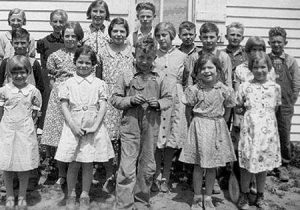
 needs of the family…clothing, furniture, or even their houses…people persevered. Of course, food was a little bit more difficult in those days, because if the crops wouldn’t grow, you simply had to find something else to eat. I’m sure there were a lot of people who were pretty skinny in those days…as well as pretty hungry. Nevertheless, with the help of creative mothers, and industrious flour distributors, the girls looked very nice, and quite fashionable.
needs of the family…clothing, furniture, or even their houses…people persevered. Of course, food was a little bit more difficult in those days, because if the crops wouldn’t grow, you simply had to find something else to eat. I’m sure there were a lot of people who were pretty skinny in those days…as well as pretty hungry. Nevertheless, with the help of creative mothers, and industrious flour distributors, the girls looked very nice, and quite fashionable.
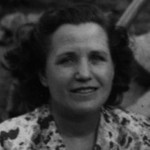
 When you read through the personal journal of another person’s life, you must be prepared for the many emotions that life can produce in people. My great aunt, Bertha Schumacher Hallgren was an amazing woman, as was her younger sister, Elsa Schumacher Lawrence. They spent years working in a man’s world, and being successful at it…in fact out working them and being capable of using machinery the men couldn’t. They were considered so invaluable that the companies they worked for tried really hard not to give them any time off, as the place didn’t do so well when they were gone. The work was so emotionally draining, that the only release for them sometimes came in the form of bitter tears. Nevertheless, times were tough during the depression years, and you didn’t just walk away from a job, because the going got tough.
When you read through the personal journal of another person’s life, you must be prepared for the many emotions that life can produce in people. My great aunt, Bertha Schumacher Hallgren was an amazing woman, as was her younger sister, Elsa Schumacher Lawrence. They spent years working in a man’s world, and being successful at it…in fact out working them and being capable of using machinery the men couldn’t. They were considered so invaluable that the companies they worked for tried really hard not to give them any time off, as the place didn’t do so well when they were gone. The work was so emotionally draining, that the only release for them sometimes came in the form of bitter tears. Nevertheless, times were tough during the depression years, and you didn’t just walk away from a job, because the going got tough.
It wasn’t the years of hard work that seemed to be the most severe blow to Bertha, but rather the life changing moment when her sister, Elsa decided after all the years of caregiving for their parents, now both gone home to Heaven, to marry a man who was a widower ready to retire. Bertha and Elsa had made the decision, probably subconsciously, to set aside their hopes for a family and a home of their own at a very young age. They were the youngest of their parents seven children, and while the other children had married and left home, comfortable in the knowledge that the two youngest sisters were still there taking care of their aging parents, the girls knew that no one would be left if they married too. After their parents passing, the girls lived together for a number of years, before Elsa met Frank Lawrence and became engaged.
Bertha likens the situation to divorce. She had lived with her sister for 40 years, and the separation was torturous. To make matters worse, their older sister, Mina, who had always lived close, made the decision to move to Colorado to be near her daughter, Paula, while her husband, John Spare went into the CBees during World War II. Bertha talked about dividing the things she and Elsa had in the home, and looking for a smaller apartment that she could afford on her own…and she talked about the tears. For the first time in her life, Bertha was going to be alone, and she didn’t like or want this, at all.
I know how she feels to a degree. I am not alone, because I have much family, and of course, my husband, Bob Schulenberg in my life. Nevertheless, after a parent, or other patient you have cared for goes to Heaven, or even gets better, and goes about their own lives, the caregiver can find themselves at loose ends. They wonder who they are if they are not a caregiver. Then, as in Bertha’s case, the only companionship she had every really known is gone too. She felt like she had just been placed on top of a cliff, and the only way out was to fall, and the consequences of that were just as bad as staying put.
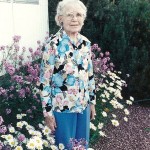
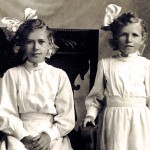 In the end, Bertha would move to Colorado with Mina and Paula, and she would meet the man she would marry. The marriages of Bertha and Elsa would not last long, because their husbands both died after a short marriage and much happiness. The girls regrouped, and once again became companions for each other. It was as if it was meant to be…as if they had never been apart. Their lives had always been intertwined, and their golden years would be spent together in their new home in Boulder, Colorado…until Bertha passed away in 1984, leaving Elsa alone until her passing in 1992.
In the end, Bertha would move to Colorado with Mina and Paula, and she would meet the man she would marry. The marriages of Bertha and Elsa would not last long, because their husbands both died after a short marriage and much happiness. The girls regrouped, and once again became companions for each other. It was as if it was meant to be…as if they had never been apart. Their lives had always been intertwined, and their golden years would be spent together in their new home in Boulder, Colorado…until Bertha passed away in 1984, leaving Elsa alone until her passing in 1992.

 Every day, we see change happening all around us. Some of it is good, some bad, and some is just simply change, but some things just never seem to change. There is a timelessness about laughter for instance. It doesn’t matter if it is a giggle, a big belly laugh, or a throw your head back laugh, laughter is contagious and just simply fun. It’s also good for you. It lifts depression, and it just makes you feel better about your day…even if it’s been a bad one up to that point. Our lives may change, bringing periods of sadness, grief, pain, and loss, but even in those times, our memories can bring moments where a memory brings a bout of laughter, that lifts our spirits even in the saddest of times.
Every day, we see change happening all around us. Some of it is good, some bad, and some is just simply change, but some things just never seem to change. There is a timelessness about laughter for instance. It doesn’t matter if it is a giggle, a big belly laugh, or a throw your head back laugh, laughter is contagious and just simply fun. It’s also good for you. It lifts depression, and it just makes you feel better about your day…even if it’s been a bad one up to that point. Our lives may change, bringing periods of sadness, grief, pain, and loss, but even in those times, our memories can bring moments where a memory brings a bout of laughter, that lifts our spirits even in the saddest of times.
Thankfully, most people live relatively happy lives, filled with blessings mingled with those few sad times. It is during those happy times that we find ourselves noticing the things we like about the good times…things like the timelessness of our laughter. In taking pictures of the unwrapping of the Christmas gifts, I got a couple of pictures of my girls laughing. It’s funny how a picture in which the subject closed their eyes, can become one of the most treasured. Both of my girls were laughing and in the laugh, their eyes closed, but it was because of the joy of the moment, and that is what made all the difference. Then Corrie sent me a text with a picture comparison of her now and in the middle of a laugh as a little girl. All I can say, is that some things never change. Talk about the timelessness of our laughter. Corrie now looked so much the same as Corrie then, it was uncanny. We always think of ourselves as changing so much as we grow up, but maybe it isn’t really such a change after all.
Things like our smile, laughter, frowns, and other facial expressions really don’t change to very much over the years. We just think they have changed until we see them do the same thing years later that you have see in a picture. That is what happened to me when Corrie noticed that in the picture I took on Christmas eve. She saw that it looked a lot like one that had been taken years ago on another Christmas eve. She hasn’t changed much at all. She still has the ability to throw her head back and laugh as hard as anyone…just like she did as a kid.

 Laughter is such a wonderful part of our lives. It is something that adds meaning to our lives. There are things in our lives that change…never to be the same again, and there are things that never change. It makes me glad that the laughter and the way people laugh just never change. The memories that include laughter are the best kind of memories there are. Every time I think of my kids laughing I can now remember the laughter as little ones, and realize that it is the same and the grown up daughters they have become. I love that some things just never change…don’t you?
Laughter is such a wonderful part of our lives. It is something that adds meaning to our lives. There are things in our lives that change…never to be the same again, and there are things that never change. It makes me glad that the laughter and the way people laugh just never change. The memories that include laughter are the best kind of memories there are. Every time I think of my kids laughing I can now remember the laughter as little ones, and realize that it is the same and the grown up daughters they have become. I love that some things just never change…don’t you?
 A few years ago, I found myself sinking into depression. There was so much going on in my life that I had no control over, and I was stressed out to say the least. This situation was so new to me. I had always been a happy person, and now I was becoming angry and bitter, and I didn’t like it one bit, but there seemed to be nothing I could do about it. My situation had taken on a life of it’s own.
A few years ago, I found myself sinking into depression. There was so much going on in my life that I had no control over, and I was stressed out to say the least. This situation was so new to me. I had always been a happy person, and now I was becoming angry and bitter, and I didn’t like it one bit, but there seemed to be nothing I could do about it. My situation had taken on a life of it’s own.
After my Dad passed away in December of 2007, I found myself feeling like there wasn’t much to live for. It wasn’t like I wanted to commit suicide, I just felt so sad, that I couldn’t find anything to be happy about. We had fought so hard to get Dad back to health, and we were winning, and then his liver failed, and he was gone. It shook my whole world. Nothing was right, and it wouldn’t ever be right again. Even though I know that my Dad was saved, and I will see him again in Heaven, I missed him so much, and I still do, but I knew he wouldn’t want me to continue on in this depressed state.
I had to find a way back to life. I began to pray for help…for a way back. The Lord guided me first to begin eating better, thereby giving me more energy. Then the Lord began to encourage me to get outside and walk. I started walking on the trail near our home, and slowly began to feel like the fresh air and beauty of God’s creation, and the time spent talking with the Lord began to heal my spirit. I continue to look forward to the warmer months when I can get back outside and recharge again.
I still miss my Dad terribly, but I have been able to move forward with my life. I know I will see him again in Heaven, and I very much look forward to that day, but I know that I have a job to do here. My work here is not done. I am needed here. And my Dad would want me to live a full life.
I know that my life will always have it’s challenges, but the Lord is always there for me. He is my source of strength. I know many people might not find that to be true for them, but they have not been down the road I have. They have not seen the Lord help them to find the way back.

